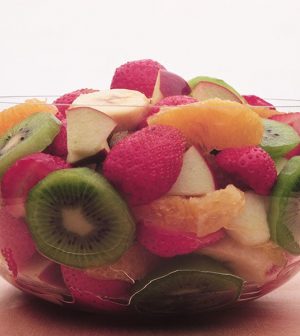- Strengthening Your Relationship: Practical Strategies
- Skip Storing This Everyday Product in the Fridge Door
- Green Tea + B3 Pairing May Boost Brain Health
- Navigating Your Midlife Crisis: Embracing New Possibilities
- City Raccoons Showing Signs of Domestication
- Mapping the Exposome: Science Broadens Focus to Environmental Disease Triggers
- One Week Less on Social Media Linked to Better Mental Health
- Your Brain Changes in Stages as You Age, Study Finds
- Some Suicide Victims Show No Typical Warning Signs, Study Finds
- ByHeart Formula Faces Lawsuits After Babies Sickened With Botulism
Keeping Track of Healthy Calories

Even when eating nutritiously, healthy aging depends on moderating the number of calories you take in.
Surprisingly, studies show that if you follow a healthy diet, but eat more than an average number of calories, you won’t fare any better in terms of healthy aging than people who follow the traditional Western diet. You want a lifelong diet plan that provides micronutrients, fiber and antioxidants while still limiting calories.
That means whether you count calories or portion sizes, it’s important to keep track of all high-calorie foods, even the healthful ones.
Here are some examples.
While plant oils — such as walnut, olive, safflower, sunflower, grapeseed and sesame oils — are better for you than butter with all its saturated fat, tablespoon for tablespoon, oils actually have more calories — 120 to 130 calories compared to butter’s 100. Use an oil spray to coat pans before cooking to conserve calories when you really need to use oil.
When eating a rainbow of veggies, winter squash and sweet potatoes are great choices in the orange color range, but 4 ounces of squash have only 44 calories compared to 84 calories for the same amount of sweet potatoes. If you need a large portion to feel full, eating squash will allow you twice the volume for the same number of calories.
Among the most nutrient-dense fruits, a large banana can have 120 calories while a cup of strawberries is barely 50.
Nutrient-rich, high-calorie foods are still good for you, but consider cutting portion sizes in half to keep the needed ceiling on your overall calorie intake.
More information
Need a portion size reminder? The U.S. National Heart, Lung, and Blood Institute has an illustrated serving size card you can print and carry with you.
Source: HealthDay
Copyright © 2025 HealthDay. All rights reserved.










